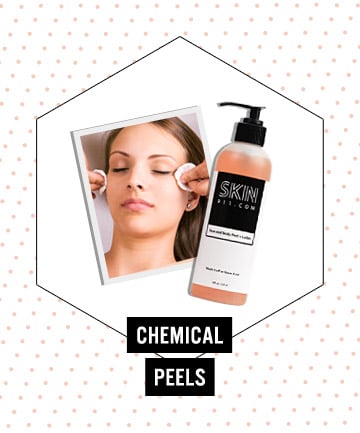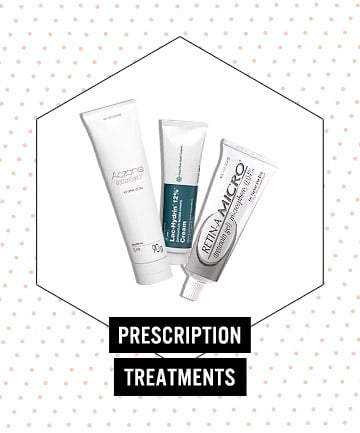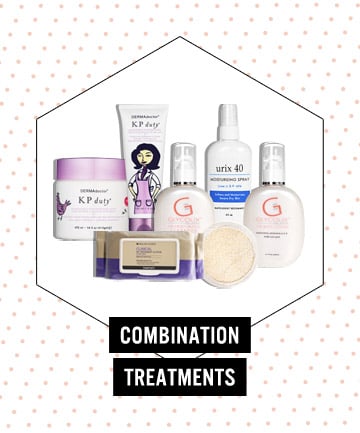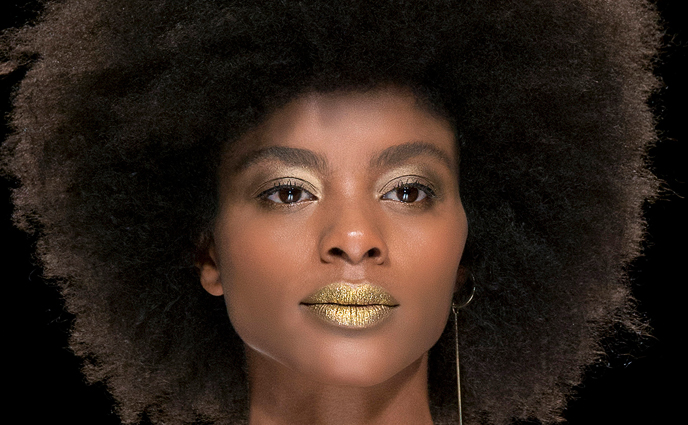What It Is: When you go upwards of 10 percent salicylic or 20 percent glycolic acid, you're verging into peel territory. These are topical treatments applied in a dermatologist's office or salon, and usually consist of 20 to 30 percent salicylic or 40 percent glycolic acid. These high concentrations deeply exfoliate the skin, resulting in a much smoother, glowier surface. For an at-home version, try Skin 911 Face and Body Peel Plus Lotion, $85.
Who Should Use It: Those who haven't found OTC chemical exfoliators quite effective enough, and are looking for a more intensive treatment.
Pro Tip: It's important to remember that it takes 28 days for our bodies to reproduce the upper layer of skin. So if you don't see results from an OTC acid treatment overnight, don't skip directly to a peel. It takes a few weeks to see results.
Who Should Use It: Those who haven't found OTC chemical exfoliators quite effective enough, and are looking for a more intensive treatment.
Pro Tip: It's important to remember that it takes 28 days for our bodies to reproduce the upper layer of skin. So if you don't see results from an OTC acid treatment overnight, don't skip directly to a peel. It takes a few weeks to see results.
What It Is: Sometimes, OTC chemical treatments aren't potent enough to put those bothersome bumps to rest. Other times, the ingredients themselves don't work with your body. In such cases, KP sufferers might need a prescription treatment, such as a high-concentration lactic acid cream, urea medication or even acne treatment.
"One of my favorite prescription treatments is Aczone," says Jaliman. "It's a topical acne preparation made with dapsone, which is an anti-inflammatory, but works well for this condition." Jaliman says she has also used prescription retinoids, such as Renova and Retin-A, for some patients.
Who Should Use It: In severe cases or when OTC treatments aren't making a dent in your KP, consult a dermatologist about trying a prescription medication.
"One of my favorite prescription treatments is Aczone," says Jaliman. "It's a topical acne preparation made with dapsone, which is an anti-inflammatory, but works well for this condition." Jaliman says she has also used prescription retinoids, such as Renova and Retin-A, for some patients.
Who Should Use It: In severe cases or when OTC treatments aren't making a dent in your KP, consult a dermatologist about trying a prescription medication.
What It Is: When there's no definitive cure for a condition, an effective strategy can be to attack from multiple angles, advises Schultz. No one knows your skin better than you do, so using your best judgment, try mixing two or more of the aforementioned treatments. For example, use a physical exfoliator combined with a glycolic acid lotion, such as Dermadoctor KP Duty Dry Skin Duo, $82. Throw a urea spray into the mix for extra moisture. (Try Lovely Skin's Glycolix Elite Keratosis Pilaris Kit, $62.40).
Does glycolic acid not work for your skin? Benefit from salicylic and lactic at the same time with Paula's Choice Clinical KP Treatment Cloths, $32. KP is a tricky and personal condition, so it may take some experimenting.
Pro Tip: Your skin can become inflamed from all the exfoliation. To decrease any irritation or redness, seek out an OTC or prescription Cortisone cream.
Does glycolic acid not work for your skin? Benefit from salicylic and lactic at the same time with Paula's Choice Clinical KP Treatment Cloths, $32. KP is a tricky and personal condition, so it may take some experimenting.
Pro Tip: Your skin can become inflamed from all the exfoliation. To decrease any irritation or redness, seek out an OTC or prescription Cortisone cream.







